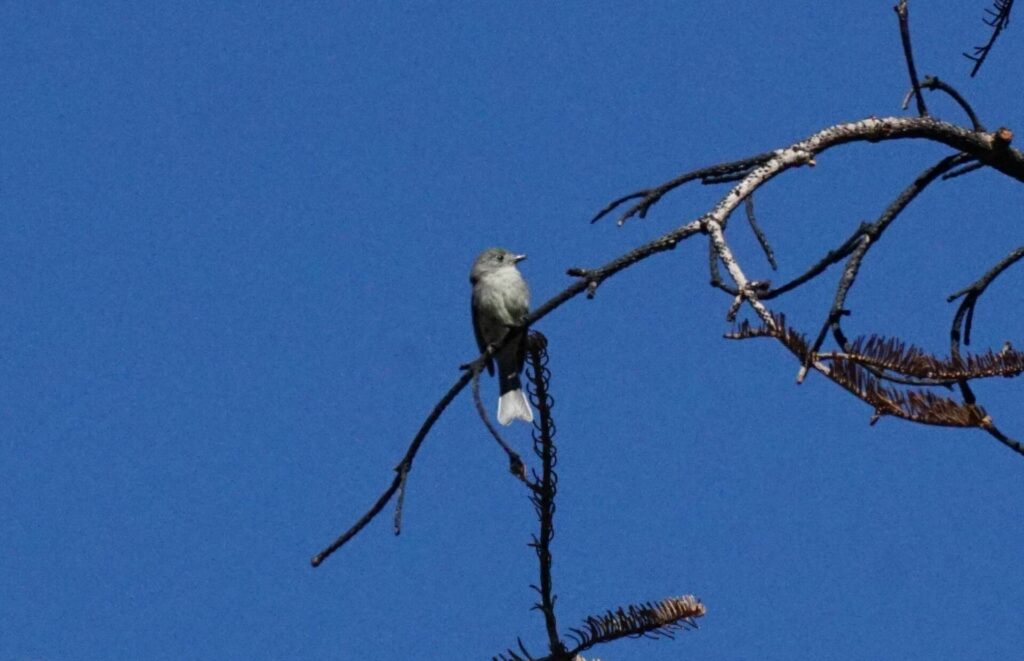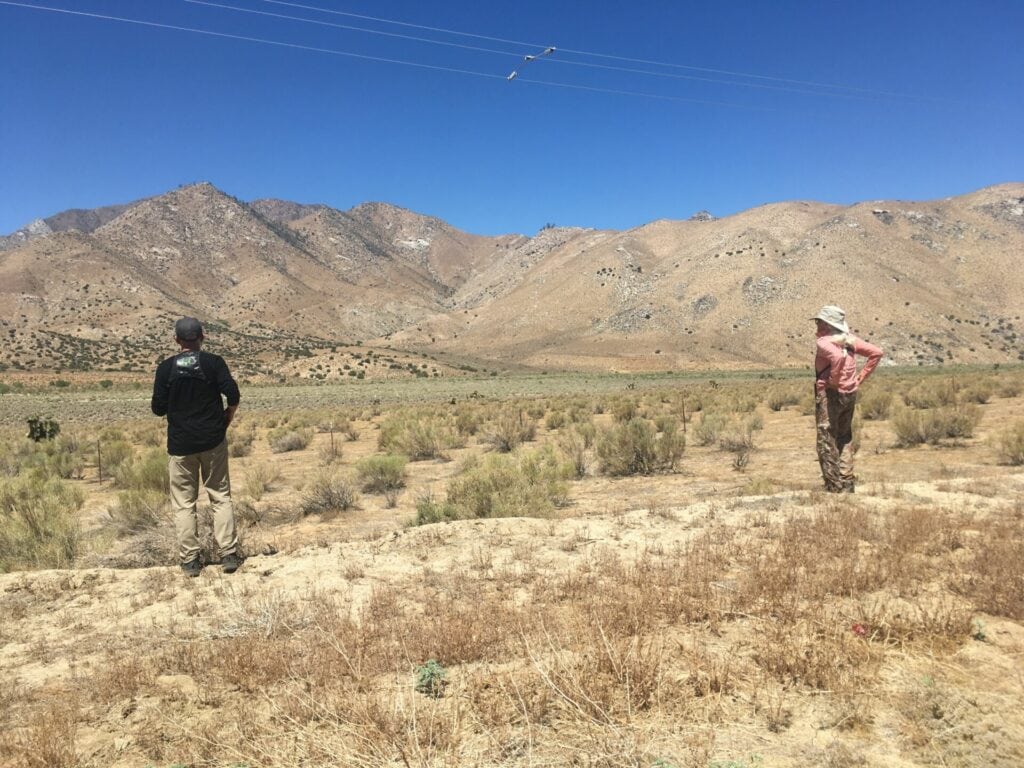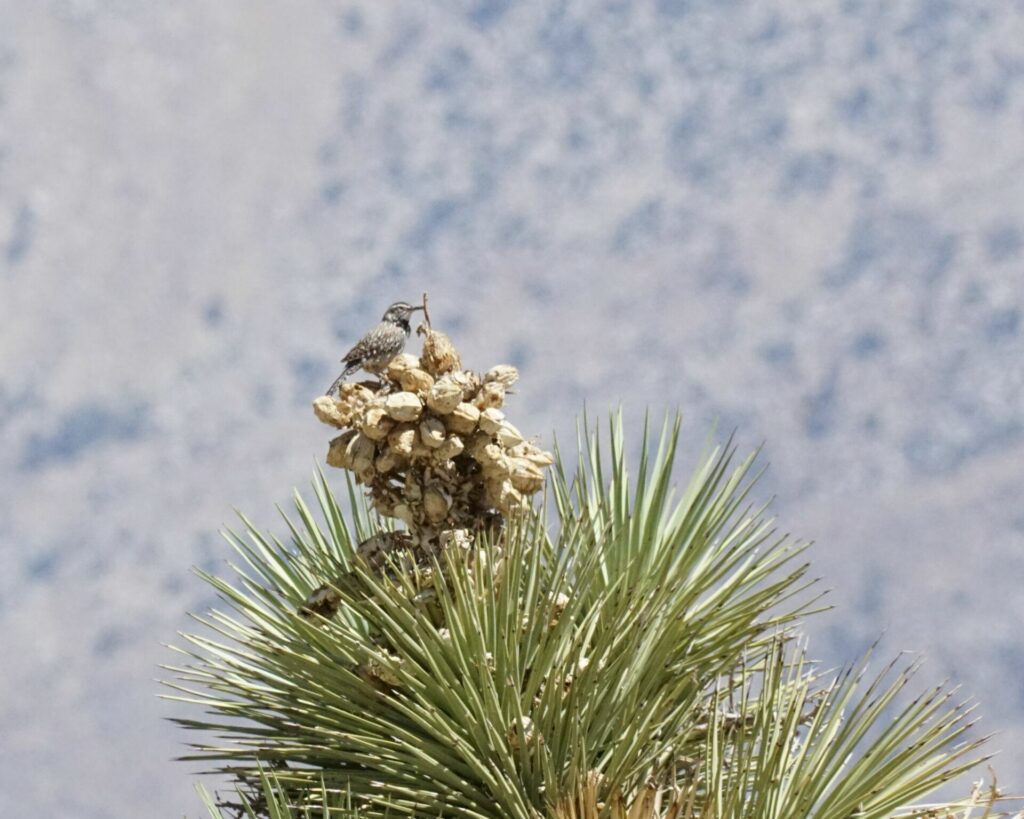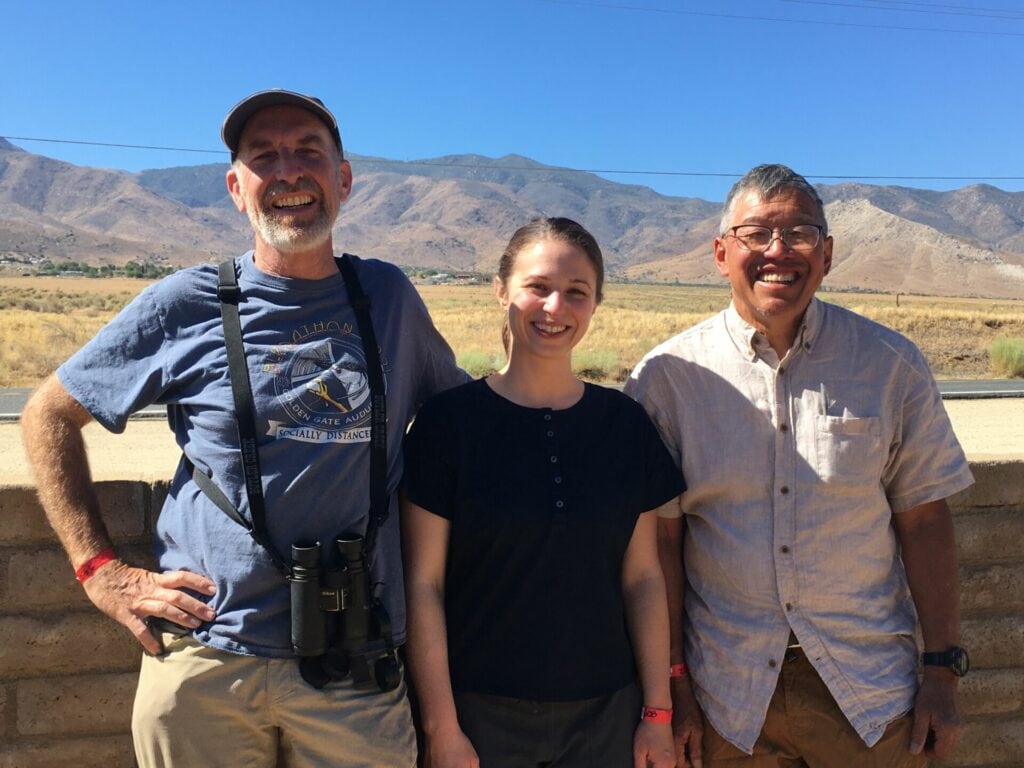From the Sierras to the Mojave: A Search for the Yellow-Billed Cuckoo
By Brandy Ford
Walking along a dry sandy riverbed early one July morning in the Kern River Valley, we heard it—a slow, sharp bark building into a rapid rattle. The Yellow-Billed Cuckoo had spotted us. Before we encountered our elusive friend in this gentle riparian habitat on the edge of the Mojave Desert, Bruce Mast and a group of intrepid 2020-2021 Master Birder alumni had spent a few days and nights birding the Sierras.

Our trip began early on July 1, 2022. Disembarking from Porterville on Highway 190, we stopped in turnouts along the winding road to see Lazuli Buntings, Lawrence’s Goldfinches, a Chipping Sparrow, and Ash-throated Flycatchers. When we reached an elevation of about 7,000 feet, we pulled into Quaking Aspen Campground to bird an expansive meadow, go on an easy hike, and have lunch. It was a delight to see adult and fledgling MacGillivray’s Warblers and Dusky and Hammond’s Flycatchers. While heading back to the picnic area, we spotted two Pileated Woodpeckers ambling amongst downed timber and, over lunch, Green-tailed Towhees foraged on the ground around us.
We headed south about a half hour to the Trail of 100 Giants. A meadow borders the trailhead parking lot, and, just beyond the asphalt, we saw a downy fledgling Warbling Vireo perched in plain sight on a small arched branch. As I closely observed the small bill and even smaller eyes peeking through the otherwise uniformly gray and round bird, it began to beg loudly for food. Its parents had arrived, and we stood by, watching it feed.
Our home for the night was Holey Meadows campground just down the road. After setting up the tents, eating a delicious meal, and resting, we grabbed our binoculars and flashlights and walked down the road we had driven in on, searching for owls. As we walked along quietly in the dark, we saw the stars come up over the meadow and strained to hear the low calls of our nocturnal companions. And suddenly, we did. A Northern Saw-whet Owl gave a metered whistle and flew into a tree overhead. As Bruce turned on his spotlight, we saw its dark silhouette before it vanished just as quickly as it had arrived.

The next morning we set out for the Mojave Desert, just beyond the Kern River Valley below. As we quickly descended into the desert, we pulled off the road once more to see a number of Band-tailed Pigeons clustered around a stream. We arrived at Kelso Valley Road around 11 am and were welcomed by a pair of Cactus Wrens in a Joshua Tree and a nearby singing Scott’s Oriole. We sought shelter from the heat of the day under tall cottonwood trees at Frog Spring. Lunch was punctuated by a cold watermelon slice directly from the cooler, and the harsh desert climate melted away.

That night we set up camp in Weldon, just minutes away from the South Fork of the Kern River Preserve—tomorrow morning’s destination. At dawn, we set out in search of the Yellow-Billed Cuckoo along a dirt road. No Cuckoo called, but we were dazzled by a mottled immature male Summer Tanager, its yellow-green and red plumage displaying brightly in the sun. A bit further down the road, we saw a uniformly red adult male Summer Tanager and a young male Costa’s Hummingbird just growing his purple gorget (the patch of colored feathers found on the throat of some bird species).

Next, we headed into the Sierras via Chimney Peak Road, where we stopped to have lunch and enjoy a Gray Flycatcher in the trees. Chimney Peak Road met Kennedy Meadows Road, where we chased a flock of Pinyon Jay all the way to Kennedy Meadows Campground. At the campground, we spotted a Plumbeous Vireo singing from a high pine perch on the opposite side of the South Fork of the Kern River.
On Monday, July 4, our last morning, we decided to try for the Yellow-Billed Cuckoo once more. Instead of walking on the road through the South Fork Wildlife Area, we hiked downstream toward Lake Isabella. In the tall reeds of a small marshy area we saw Yellow-breasted Chats, their white eye-crescents standing out starkly against their gray faces. In the trees, multiple Blue Grosbeaks were singing and we got an incredible look at a male perched on a branch just above us.
And then we heard it—a Yellow-billed Cuckoo called in the tree canopy above us and another responded. A moment later they called again further away, and we followed single file through tall grasses and stinging nettles, always just a few feet behind. We made a small loop and ended up in the same spot where we had heard the Cuckoos call originally. And they called again, this time farther still. We wondered aloud, “Should we follow them again?” No, better leave it for next time.

On June 23rd, six adventuresome birders will have the opportunity to join outstanding guide and birding-by-ear extraordinaire, Bruce Mast, on a four-day trip to the South Fork of the Kern River. The Kern Cuckoo Quest will take the lucky winners of this auction item to a 1,136-acre riparian forest in search of Yellow-billed Cuckoo, Summer Tanager, Blue Grosbeak, and Willow Flycatcher. But that’s not all. Opportunities abound to see Mojave Desert specialists such as Scott’s Oriole, LeConte’s Thrasher, Ladder-backed Woodpecker, and Cactus Wren, and even mountain species like Plumbeous Vireo, Pinyon Jay, Gray Flycatcher, and more.
Brandy Deminna Ford is a Bay Area birder and 2020-2021 Master Birder program alumna. When she’s not on birding and camping excursions with her friends or participating in the Marin County Breeding Bird Atlas, you can find her curled up with a good book and her two whippets.
